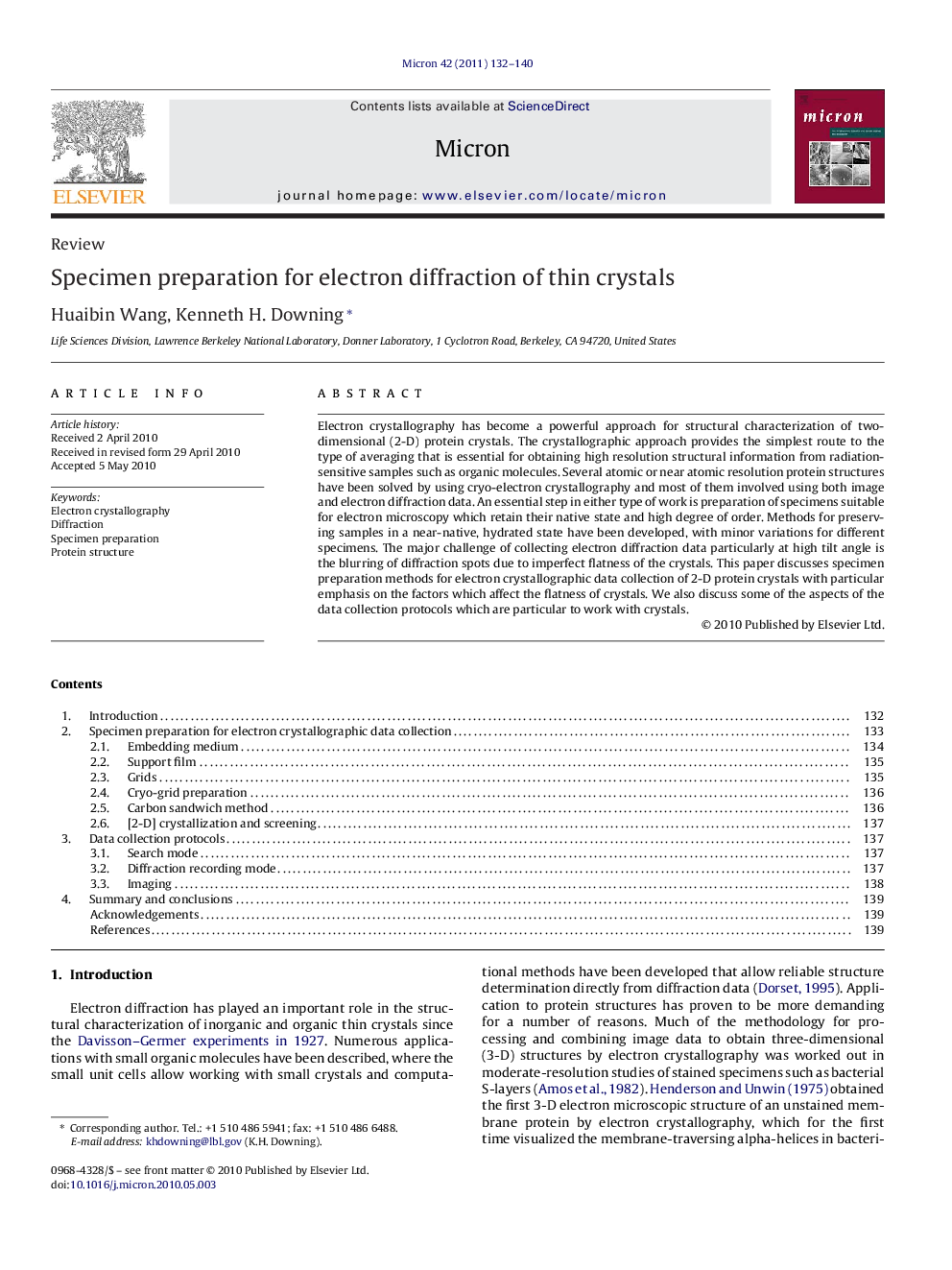| Article ID | Journal | Published Year | Pages | File Type |
|---|---|---|---|---|
| 1589171 | Micron | 2011 | 9 Pages |
Abstract
Electron crystallography has become a powerful approach for structural characterization of two-dimensional (2-D) protein crystals. The crystallographic approach provides the simplest route to the type of averaging that is essential for obtaining high resolution structural information from radiation-sensitive samples such as organic molecules. Several atomic or near atomic resolution protein structures have been solved by using cryo-electron crystallography and most of them involved using both image and electron diffraction data. An essential step in either type of work is preparation of specimens suitable for electron microscopy which retain their native state and high degree of order. Methods for preserving samples in a near-native, hydrated state have been developed, with minor variations for different specimens. The major challenge of collecting electron diffraction data particularly at high tilt angle is the blurring of diffraction spots due to imperfect flatness of the crystals. This paper discusses specimen preparation methods for electron crystallographic data collection of 2-D protein crystals with particular emphasis on the factors which affect the flatness of crystals. We also discuss some of the aspects of the data collection protocols which are particular to work with crystals.
Related Topics
Physical Sciences and Engineering
Materials Science
Materials Science (General)
Authors
Huaibin Wang, Kenneth H. Downing,
